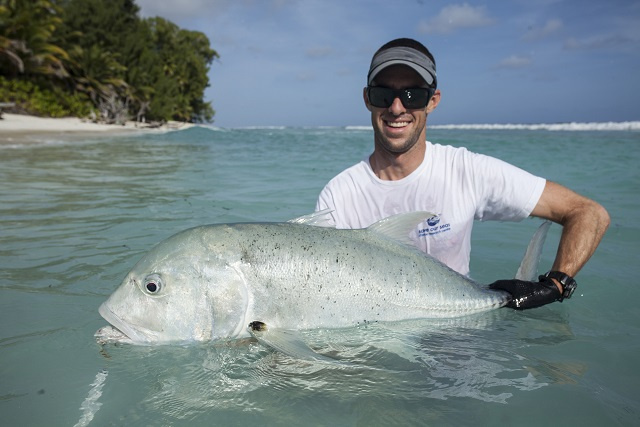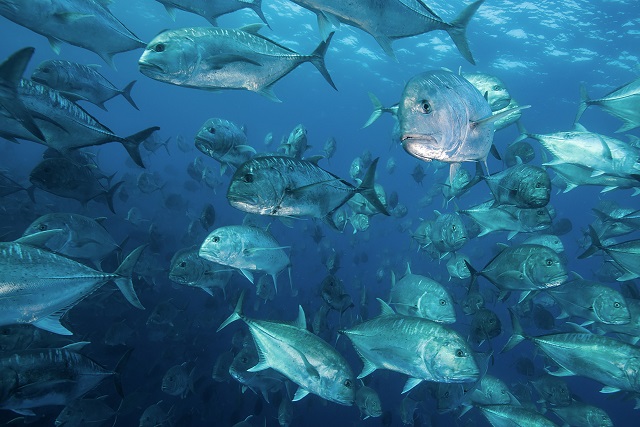Nursery areas of Seychelles giant trevally must be protected for species to survive, study finds

Ryan Daly releasing a tagged giant trevally. (Clare Keating/Save Our Seas)
(Seychelles News Agency) - Research by the group Save Our Seas has found that the nursery areas of the Seychelles giant trevally need to be preserved to ensure the species' survival.
Locally known as 'karang ledan', the giant trevally is a popular, sought-after prize fish in Seychelles, particularly in the big-game sportfishing industry. The giant trevally is a fish characterised by a steep head profile and silvery colour with occasional dark spots, although mature males may be black.
It is a top predator in most habitats and is known to hunt individually and in schools, and to grow up to 170cm long and weigh 86kg.
The Save Our Seas Foundation's (SOSF) Seychelles ambassador, Helena Sims, said that "although the giant trevally is very popular and sought after, not much was known about its population dynamics in Seychelles until recently."
"For Seychelles, it is important to study the range of targeted species to better understand how to manage and conserve them effectively," said Sims.
 |
| The giant trevally is a fish characterised by a steep head profile and silvery colour with occasional dark spots, although mature males may be black. (Ryan Daly/Save Our Seas) Photo License: All Rights Reserved |
Other than conserving the nursery areas, the new research by the Foundation's D'Arros Research Centre has revealed that the larger areas these fish move through and frequently use as adults should be taken into account when conservation planning is undertaken.
In order to find out where this fish went and when, researchers tagged individuals with acoustic tags in 2016 and were able to track the trevallies' movement across the Amirantes, a group of outer islands in Seychelles.
Results gathered showed that juveniles stayed around St Joseph Atoll, but that the extent of the area they frequently used quickly increased as they grew bigger. By the time they were adults, they were using the whole Amirantes Bank.
This indicated that, although small and large adults utilised similar areas, large adults occasionally travelled longer distances, probably driven by their need to find more food to eat as they grew, in order to meet their increasing energy requirements.
The area giant trevally frequently used was larger than what had been reported from other tropical islands and atolls around the world.
A former director of research centre, Ryan Daly, said that the study showed that "it took some giant trevally a surprisingly long time – on average 18 months but sometimes over 30 – to use the full extent of their home range."
"This emphasises the need to follow, track and monitor threatened species in the marine environment for long enough to appreciate the full extent of their home range and thus to understand how spatial protection like marine protected areas is going to be effective," said Daly.
Daly led the study, which was published as 'Ontogenic shifts in home range size of a top predatory reef-associated fish (Caranx ignobilis): Implications for conservation in Marine Ecology Progress Series on April 15 2021.





